 We’re anticipating 10-12 Medical Rapid Response Teams (120-144 medical personnel) to participate. Civilian and military, they will be coming from several states. In addition, there will be local and state agencies involved and exercise play at several locations.
We’re anticipating 10-12 Medical Rapid Response Teams (120-144 medical personnel) to participate. Civilian and military, they will be coming from several states. In addition, there will be local and state agencies involved and exercise play at several locations.
I believe I have a good grasp on what it will look like along the west coast after a 9.0 earthquake and subsequent tsunamis roll ashore but I was looking for some way to validate my ideas. I could think of no better way than speaking with someone who was on the ground within 12-hours of the 2011 earthquake and tsunami in Japan. It sounded easier than it was but eventually through friends of friends in Japan and the Consulate – General of Japan in Chicago office I was put in touch with a perfect eye witness.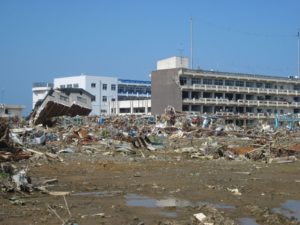
Patty Breun was an American teacher working under a teaching contract in Japan. She is one of a handful of Americans actually witnessing the event first hand. As luck versus fate would have it, Patty was in Kesennuma at 2:46 local time when the ground started shaking. I say luck because on this day she was actually working at the elementary school where her own two children were attending. Had Patty been working in one of the other schools where she also taught, she may have lost her life to the tsunami. In addition, if she survived she would have been separated from her children and it would have taken some time to make her way to them.
When Patty arrived to start her teaching contract she went through a disaster preparedness workshop. I’m curious how many of my readers have ever heard of an American company doing such a thing on US soil? Patty took the workshop lessons to heart and made a couple of great decisions. She had a kerosene heater. More to the point she had a kerosene heater that did not require electricity.  Many Japanese homes use kerosene heaters that have an electric fan component. When the electricity goes out, the heater won’t work. One of her most vivid recollections of the event is how cold it was and that a source of warmth was critical to survival. Many Japanese earthquake/tsunami survivors perished from hypothermia alone.
Many Japanese homes use kerosene heaters that have an electric fan component. When the electricity goes out, the heater won’t work. One of her most vivid recollections of the event is how cold it was and that a source of warmth was critical to survival. Many Japanese earthquake/tsunami survivors perished from hypothermia alone.
She also had a small supply of potable water that she had developed just by washing out liter soft drink bottles as she consumed them over time and re-filling them with water. She shared her water with others not similarly prepared. Patty also had amassed a good supply of food just by adding to her grocery list when items were on sale.
I asked Patty to walk me through the first 12-24 hours as our MRRTs should be arriving on scene within that time frame. She said they spent the first night sleeping in cars of parents who had made it to school to get their children. Cars were not permitted to leave due to the threat of tsunami. In many situations along the coast people who were driving in their cars died when the tsunami rolled ashore. One of the changes Japanese officials have made since 2011 is to mark the elevation along roadways so people can better judge if they are high enough to be safe next time.
It turns out Patty was out of the inundation zone, but many areas that were believed to be safe along the coast were destroyed. All power was out as well as all means of communication. Patty said that a few of the cars had satellite TV and it was the only link to news on the extent of the devastation. Within 24 hours she first started hearing and seeing planes and helicopters flying overhead. Patty drove inland the next day to see if she could find an intact cell tower.  As she stopped at an intersection a convoy of about thirty fire trucks from Tokyo went by. It was at this moment it hit her, just how big this event was. To see this many fire trucks coming from so far away.
As she stopped at an intersection a convoy of about thirty fire trucks from Tokyo went by. It was at this moment it hit her, just how big this event was. To see this many fire trucks coming from so far away.
Most Japanese communities have town centers which served as gathering areas and they naturally became the center for emergency support. Local municipal workers were quick to arrive. Patty was at the school for roughly 19 hours after the tsunami. During that time they received food (rice) prepared by volunteers at the town center. Besides ensuring food was available to survivors, the municipal workers also were running search and rescue, both for survivors and the deceased. A local high school was turned into a morgue.
Patty’s apartment building was fortunate to escape without major earthquake damage and be on the uphill side of the road. Across from her place was Motoyoshi hospital. 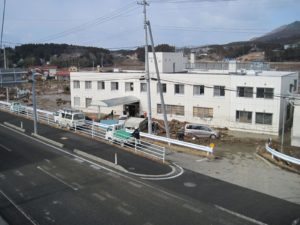 As you can see water rose halfway up the first floor. Patty said she continued to see patients and ambulances coming to the hospital but was not sure how functional it was. Just up the road from Patty’s place and the hospital this semi was caught by the wave and overturned.
As you can see water rose halfway up the first floor. Patty said she continued to see patients and ambulances coming to the hospital but was not sure how functional it was. Just up the road from Patty’s place and the hospital this semi was caught by the wave and overturned. 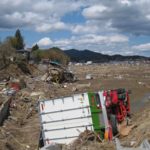
The majority of the medical issues that Patty was aware of were those caused by lack of access to medications for pre-existing medical conditions. She told me of one young boy she saw who was exhausted. He was one of the faster runners at his school and when the tsunami came he was with his mother. They both ran. The wave eventually caught up with him and as it swept him along it pinned him against a pole. He eventually was able to climb the pole and survive. His mother did not. Buildings damaged by the earthquake seemed to be somewhat random although age of the structure seemed to contribute. Newer buildings generally fared better than the old.
Patty agreed that preparedness is better in Japan than the United States for this type of event. She mentioned the community of Fudai. Mayor Kotaku Wamur had lived through a tsunami and was adamant he wanted to protect his citizens from the next one. 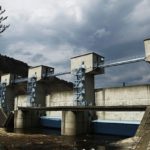 He championed and built a massive seawall even though there was stiff opposition. Patty said the mayor died some time ago but is now being credited as the mayor who saved many lives. While the tsunami was larger than expected, and destroyed countless communities, the massive tsunami wall protected the community as planned. Many citizens now visit his grave to pay their respect to the Mayor they once chastised.
He championed and built a massive seawall even though there was stiff opposition. Patty said the mayor died some time ago but is now being credited as the mayor who saved many lives. While the tsunami was larger than expected, and destroyed countless communities, the massive tsunami wall protected the community as planned. Many citizens now visit his grave to pay their respect to the Mayor they once chastised.
Patty shared hundreds of photos and videos she took and I was very lucky to get connected with her. It was obvious to me that my perception of the aftermath was accurate. 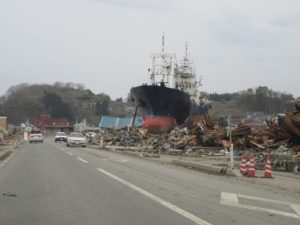 We won’t have a great deal of local support or infrastructure. Hypothermia will be an issue. Injuries from the earthquake will be an issue. The tsunami on the other hand will kill most that encounter it initially. Others will die secondarily due to lack of infrastructure and basics such as shelter and warm. Families will be torn apart. New orphans and parents who have lost children. Survivors guilt will be an issue. Even though Patty’s contract to teach in Japan is up she continues to support the communities she worked in as they struggle to rebuild years later.
We won’t have a great deal of local support or infrastructure. Hypothermia will be an issue. Injuries from the earthquake will be an issue. The tsunami on the other hand will kill most that encounter it initially. Others will die secondarily due to lack of infrastructure and basics such as shelter and warm. Families will be torn apart. New orphans and parents who have lost children. Survivors guilt will be an issue. Even though Patty’s contract to teach in Japan is up she continues to support the communities she worked in as they struggle to rebuild years later.
Speaking with Patty will be invaluable as I work with communities to develop their play book for a Cascadia event. There are critical needs that must be pre-planned for to help ensure the best outcome from the worst event imaginable. One point Patty wanted to emphasize is the need to evacuate on foot or bicycle if at all possible. Don’t try and drive.
The elderly and those with mobility issues will need access to vehicles. Too many people all trying to drive created gridlock and they died as the tsunami overtook them. The other point Patty stressed is local people must get a sense of urgency. In her location they had 45 minutes between the earthquake and tsunami. Some people even commented how big the earthquake was and then set out to make tea. On the west coast after a Cascadia earthquake, the first tsunami could be within 15 minutes. Knowing where to go and bugging out immediately will make the difference if you live or die.
My effort to reinforce realism at last year’s Cascadia exercise was not appreciated by all. It made things too hard. After speaking with Patty, I plan on redoubling my efforts. Teams responding to this type of event need to fully appreciate the sight that will be in front of them and how to function in the environment. I’d much rather they face adversity in the exercise than be over-whelmed and under-prepared in the real event.


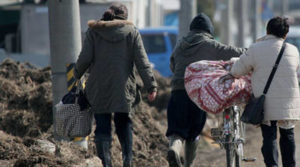


Jan, another great article and another great effort to enable exercise realism and reinforce realistic expectations!
Great article, Jan. Thank you to Patty as well for sharing her experiences and photos. A picture is truly worth a thousand words and help to express the depth and magnitude of this event.
Very well written Jan, there is nothing like a first hand account to drive home the point and reinforce the lessons learned. Stand pat on your plan.
Thanks Jim. I’ll stick to my guns.
Thanks for the insights. Living in the center of the mid-west I don’t experience earthquakes, and I had never connected the dots that a Cascadia event would include both the earth-quack and the tsunami.
I spend a fair bit of time watching YouTube coverage of major disasters, it’s an effort to prepare my mind for what I may see on deployments. As I read your article I began to wonder if we could use the new 3D technologies to train responders?
Regards,
Randy S.
Thanks for the comments Randy. 3D has a place in training but I would say it is only one method. I think you could use it to enhance the visual clues for individuals and as skill sets progress you can add in more physical environment challenges. The work I am doing with the exercise development and facilitating with the Minuteman series is to add more and more realism to the training venues. While you could simulate working in dark and rain with 3D technology, I think at some point you have people actually training in the dark and with rain (or fire hoses if nice weather).